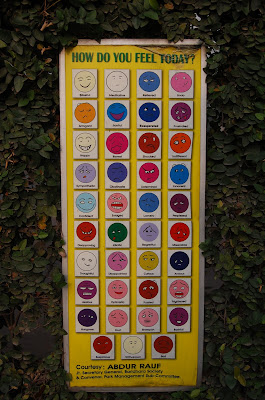Sam and Atticus were noticing that Jon was gone an awful long time. They figured he got caught up in some conversation or something and went on with their business. About ten or fifteen minutes or so later, Jon shows up at the door drenched in water (and sweat) carrying the water bottle. Things hadn’t gone well.
It had all started fine when Jon went to grab the last bottle. Of course, he had to almost literally fend off would-be helpers ‘No, no, I can do it. It’s ok,’ he said to them all. The insistence that he could do it himself had apparently bred some sort of sense of urgency and so he felt like he was in a hurry for some reason. So he quickly picks up the big bottle and as he swings in into position to walk away, it goes rocketing out of his hands. It hits the ground - CRACK! The bottom cracks open and water begins to spill everywhere. Frantically, Jon grabs the bottle and flips it over the salvage the water left inside. (Remember too, that everything in Dhaka has an audience, so there are like 3 or 4 guys watching it all.)
But this isn’t enough to save the water really, because the jug is broken and we need to store it flat-side down in order to use it. There was another empty water jug down there so Jon decided to transfer the water from the broken one into that. So he stuck it between his legs, and went to work getting the lid off the empty one. Now the dawan is involved, trying to help pry the blue plastic cover thingy off the top of the old empty one, and Jon is trying to balance the one in between his legs and the one his hands.
The dawan went to get a bucket, but Jon didn’t understand what he wanted him to do with the bucket. He was trying to explain that he didn’t want to put the water into the bucket, and then he realized that he could just set the one between his legs in the bucket.
So finally, the lid came off, and now the broken one is stuck in the bucket. The dawan held onto the bucket while Jon tugged and pulled (getting splashed with water the whole time) and finally got the broken one out.
Now came a new challenge, because the water jugs have a little thing at the top that makes it so water wont come out unless it is pressed in my the dispenser (to make it easier to load it onto the water dispenser without it splashing all over when you put it on upside down). It was surprisingly difficult to remove. Finally, by pressing and prying and holding his finger against the thing that needed to be depressed, he got the water into the new one.
Meanwhile, Jon had set the lid to the non-broken water container on a pile of door frames that he was standing next to. The garbage man had come during all of this and the garbage was behind the pile of door frames. So now, the lid was lost. Jon looked around and found the lid finally.
He then carried the water up the five flights of stairs, in 99 degree temperatures, soaking wet but not defeated. Of course, on seeing Jon in such a state, Sam grabbed a camera to immortalize the moment.
 The lesson: This is probably why nobody wants to let us do things for ourselves.
The lesson: This is probably why nobody wants to let us do things for ourselves.








































